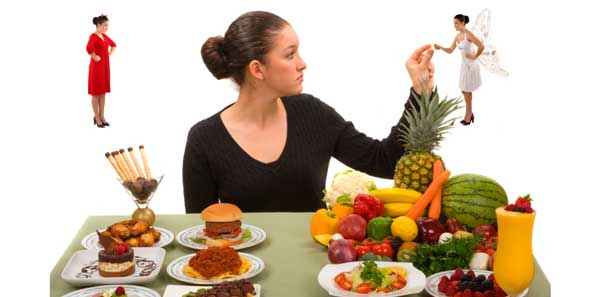News & articles.
There’s always something new happening across our clinics — from local events and team updates to patient tips and national announcements. Here’s where we share stories from the network, insights from our professionals, and helpful info for anyone looking to learn more about dental care in Canada.

Spotted the Blue Smiley? Discover Who’s Behind It.
If you’ve been driving around Toronto, walking by the Yonge-Dundas Square or peeking into one of our clinics, you might have spotted a bold smiley face and the words “Smiles Across Canada”. Who’s Behind the Blue Smiley across Canada? It’s 123Dentist! If you’ve been…

Eat This, Not That: The Best & Worst Foods For Your Teeth
You brush and floss twice a day to keep your smile healthy, but how much thought do you put into the specific types of food that go into your mouth? There are foods that can help to keep your teeth strong and healthy, and…

Six Reasons You Need Regular Dental Checkups
Having to visit the dentist every six months may not be the appointment that everyone looks forward to, but it is one of the most important ones to keep. If you have found yourself wondering what the point of having regular dental checkups and…

Working at 123Dentist – A word from our Employees
123Dentist offers an incredible work environment for our teams. Here are some kind words from one of our team members about their experience. “If you want a great, fun environment to work in, a place to learn, grow, and feel supported, then 123Dentist could be a great opportunity for you,” says Pauline Wong – Lead Hygienist.
At 123Dentist, we are guided by our mission, vision, and values, including integrity, expertise, and innovation, which influence our culture. This culture ensures that we value our peers as we work together and that our patients always experience top-tier treatment and patient care. This is the 123Difference! Whether you’re entering the job market or you’re an experienced practitioner, we welcome your interest and encourage you to join our team.
Watch our video to hear from a few of our amazing team members across Canada and learn more about working at 123Dentist.
https://www.youtube.com/watch?v=RXI4YVrkYik

How Your Oral Health Can Impact Your Overall Health
The connection between dental health and general health isn’t obvious to most people. However, research shows that oral health has a greater impact on your overall health than you may realize. Taking care of your teeth not only gives you a beautiful smile but it also improves the health of your whole body. If you’re neglecting your teeth, you could be setting yourself up for serious health problems in the future.

Tooth Decay: Living in a Sugar Culture
We all know that sugary junk food isn’t going to do us any favors for our waistlines, but eating lots of sugar will also rot your teeth and lead to tooth decay. At a 123Dentist practice, we will ensure your teeth feel healthy and can give you strategies to prevent tooth decay.

Top Parenting Hacks to Raising Kids With Good Oral Habits
Whether you just can’t seem to get your children to follow a healthy brushing routine or you’re constantly running out of supplies, raising kids to have good oral habits can feel like an uphill battle. But, you can make life easier by developing and sticking to a dental schedule for your children and learning the most effective ways to teach good dental behavior. Try these parenting hacks to teach your kids how to care for their teeth and why it’s so important.
Create a Dental Schedule for Your Children
The key to practicing long-term dental health and minimizing the likelihood of problems developing is to know when you should take your children to appointments and to do your best to stick to this schedule. These are a few of the milestones for your children’s teeth and when they need to see a dentist:

How Your General Health Issues May Impact Your Oral Health
The connection between general health and oral health has come under the spotlight in recent years. Research shows that poor oral health can put you at risk for health problems like heart disease. On the flip side, your general health can also affect your oral health. Here are six health-related issues that can impact your oral health.

Nutrition and Your Oral Health
Nutrition affects your entire body from the inside out. If you’re not eating and drinking the right things on a regular basis, then you’ll be more susceptible to disease and dental problems. Changing your daily diet and oral hygiene habits will improve your overall health and well-being. Here are a few simple steps you can take toward a more nutritious lifestyle that will result in healthier teeth and gums.
Eat More Fruits and Vegetables
Parents around the world tell their kids to eat their fruits and vegetables for good reason. These fresh food items are full of nutrients like vitamins and minerals that are essential for a healthy body. They also have a good amount of water and fibre to balance out the natural sugars they contain. Chewing raw fruits and vegetables, especially crunchy ones, stimulates saliva production to wash away acids and food particles. These things can harm teeth if they stick around for too long in the mouth.

Seasonal Snacks That Will Keep Your Smile Healthy
The winter season and its many indoor celebrations can mean you’ll find plenty of tasty snacks around every corner. While those cookies, cakes, and pies look good and taste delicious, they’re not the best choices for your teeth. To help keep your smile healthy this winter, consider reaching for one of these healthier seasonal snack alternatives.
Cheese
The next time you attend a seasonal party, help yourself to some offerings from the cheese tray. Cheese contains a protein called casein, which contains protective properties that can help fight cavities. Cheese also contains high amounts of phosphorus and calcium. These minerals can encourage teeth re-mineralization, which is a natural process that helps prevent cavities. Plus, calcium is necessary for overall bone health.

5 Things You Shouldn’t Do With Your Teeth
We all know that unhealthy habits are hard to break, but it is possible to do so. Sometimes just knowing what could go wrong can help you stop your current behaviors. The sooner you put an end to harmful dental habits, the safer and healthier you’ll be. If you continue to do some of the worst things with your teeth, then you should expect serious dental problems to arise. Avoid damage, decay, and irritation when you stop doing these five things with your teeth.

4 Healthy School Lunch Ideas for Kids
Packing lunches for your kids to take to school can be a fun task, however, it can also be challenging. Constantly trying to think of new and healthy things to pack can be difficult, especially with busy schedules, hectic mornings, and picky eaters. A little planning and inspiration can go a long way toward helping you and your kids pack healthy lunches every day.